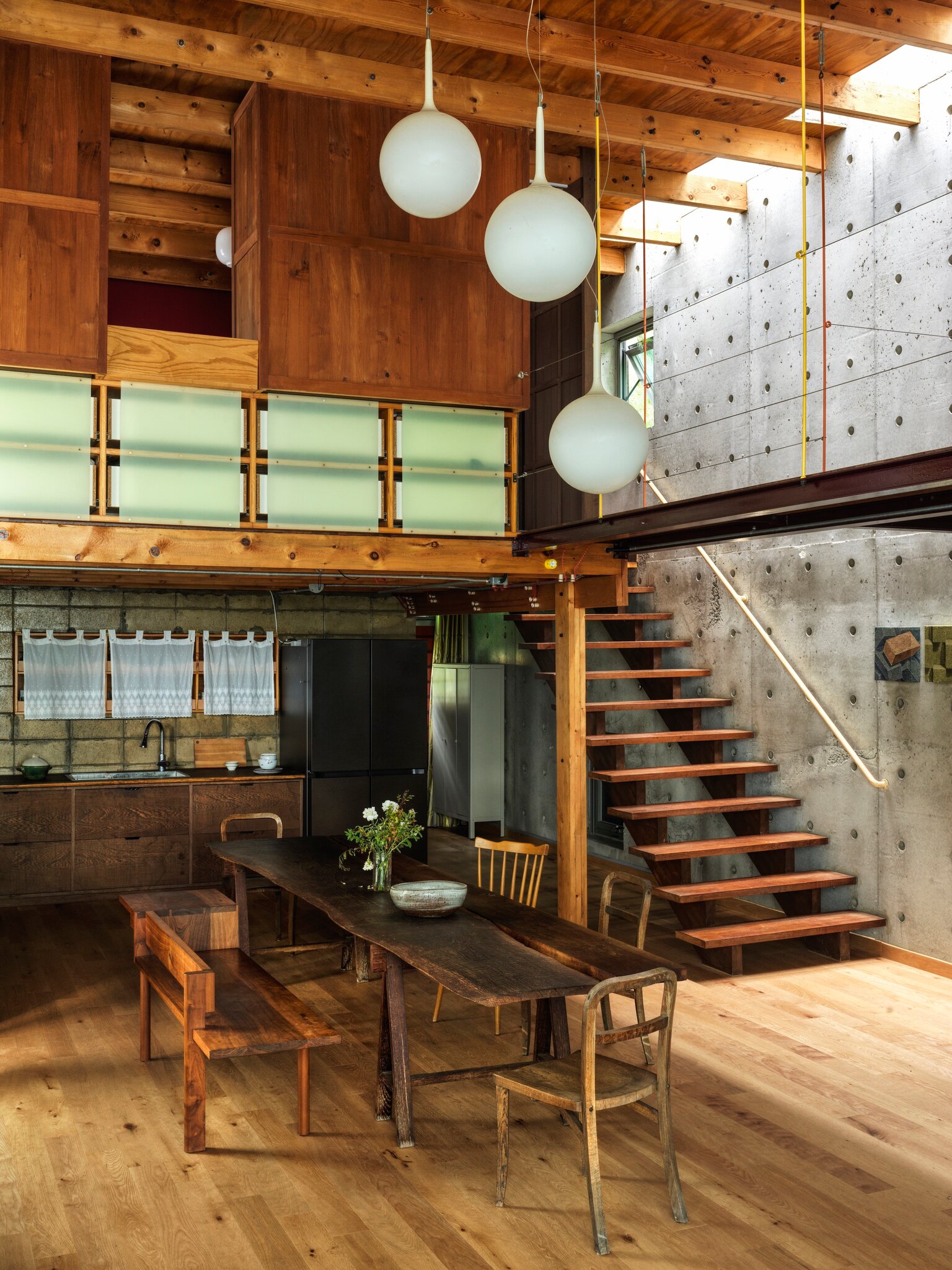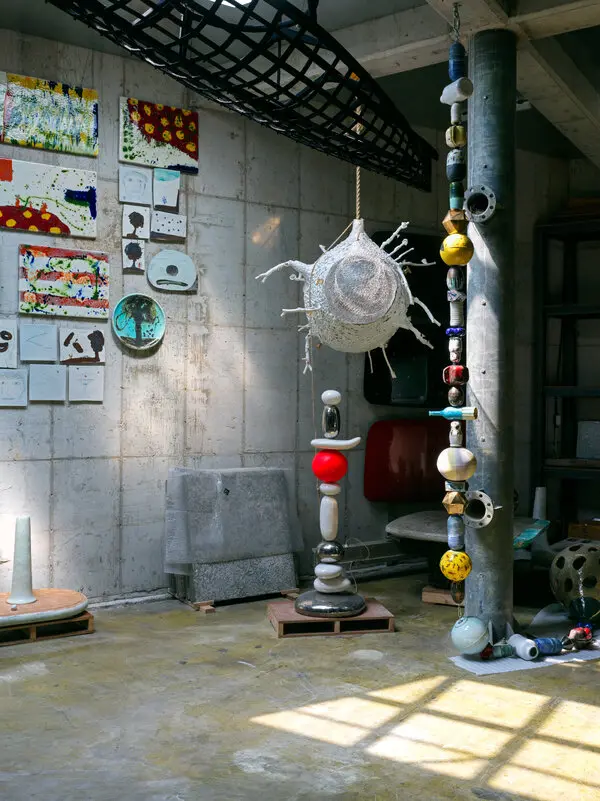His Architect Said The Site Was No Good, So He Built The Project Himself
In the realm of unconventional architectural endeavors, South Korean ceramist Hun-Chung Lee stands out as a self-taught designer and builder as His architect said the site was no good, so he built the project himself.
Author:George EvansNov 20, 202316.5K Shares486.4K Views

In the realm of unconventional architectural endeavors, South Korean ceramist Hun-Chung Lee stands out as a self-taught designer and builder. His architect said the site was no good, so he built the project himself.
What began as a quest to create a studio on a challenging piece of land turned into a remarkable collection of small buildings that mirror the ingenuity of his artwork.
A Steep Slope And A Rejected Design
Around two decades ago, Lee invested approximately $200,000 in a tilted plot of land in Yangpyeong County, an hour east of Seoul, envisioning it as the perfect location for his studio.
Initially, he took the conventional route, engaging an architect friend to design the structure. However, upon seeing the steep slope and unfavorable orientation away from the sun, the architect advised Lee to abandon the project.
Undeterred, Lee decided to take matters into his own hands. Armed with a knowledge of using a table saw and insights gained from studying sculpture, he embraced the challenge.
From drywall installation to understanding the intricacies of poured concrete, Lee embarked on a journey of self-construction.
The Evolution Of A Trio
Over several years, Lee's efforts materialized into three distinct buildings—a small house, a studio, and a gallery. These structures, although larger than his renowned ceramic pieces, embody a similar spirit of frank materiality and a passion for challenging materials.
The buildings, in essence, became glorified artworks that engage with the surrounding nature in a dialogue of stunning aesthetics.
Lee's approach to design prioritized the perfection of window positions over efficiency. He altered window placements multiple times, much to the dismay of his workers.
Unconventional choices, such as using a metal post from a freeway sign as a studio column, reflected Lee's commitment to a unique vision.
Aesthetic Choices And Challenges
Comfort took a back seat to the beauty of naked concrete, with the house primarily insulated from the exterior. A reliance on a wood stove and heated floors in winter exemplifies Lee's prioritization of aesthetics over conventional comforts.
Nina Freudenberger, in her book "Mountain House: Studies in Elevated Design," highlights Lee's project as a unique and stunning example.
Although substantially larger than his ceramic pieces, the buildings maintain a dialogue with the surrounding trees, blending into the natural landscape.
The residential segment of Lee's compound, named Bada Camp A, features a 1,000-square-foot house on three levels.
The interiors showcase a meticulous blend of materials, including perforated concrete walls, knotty wood floor planks, and exposed wood and steel beams.
Handmade Nature Of Furnishings
Furnishings within the house reflect Lee's artistic touch, with a ceramic dining table crafted by the artist himself.
The interiors feature a mix of George Nakashima chairs alongside seats pulled directly from Lee's kiln, creating a handmade and visually captivating environment.
Rustic elements, such as unevenly spaced floorboards and hand-nailed flooring, introduce a sense of imperfection, softening the austerity of the concrete and enhancing the natural feel of the space.
Evan Snyderman of R & Company, which represents Lee, notes the unexpected intimacy and warmth of the house, challenging the conventional perception of concrete as a cold and hard material. The imperfections built into the construction process add a human touch to the structure.
Lee, now 56, views the construction of the mountain complex as the endeavor of a young and financially constrained ceramist.
Having transitioned from solo work to conducting assistants, he is increasingly drawn to painting, which offers a more intimate relationship with the medium.
A Continued Artistic Journey
Lee envisions adding one more building to the complex—a high-ceilinged painting studio. However, this idea faces resistance from his wife. As his artistic journey evolves, Lee continues to challenge norms, proving that true artistry knows no bounds.
In documenting Lee's architectural odyssey, Nina Freudenberger captures the essence of a project that transcends conventional design, embodying the spirit of a ceramist turned self-taught architect.
The mountain retreat stands not just as a residence but as a testament to the boundless creativity that flourishes when one dares to build and live at high altitudes.
Final Words
In the remarkable journey of South Korean ceramist Hun-Chung Lee, the unconventional became extraordinary. From an architect's rejection to a self-taught endeavor, Lee's mountain retreat is more than a residence; it's a testament to boundless creativity.
Embracing imperfections, challenging norms, and crafting dialogue with nature, Lee's trio of buildings transcends conventional design, becoming glorified artworks.
As he transitions to painting, Lee's artistic odyssey continues, proving that true artistry knows no bounds, and every unconventional choice contributes to a masterpiece that resonates with warmth, intimacy, and the essence of a ceramist turned architect.

George Evans
Author
George Anderson, an exceptional architectural designer, envisions and brings to life structures that transcend the realm of imagination. With an unwavering passion for design and an innate eye for detail, George seamlessly blends form and function, creating immersive spaces that inspire awe.
Driven by a deep appreciation for the interplay of space, light, and materials, George's innovative approach redefines the possibilities of architectural design. His visionary compositions leave an indelible mark, evoking a sense of wonder and transforming the built environment.
George Anderson's transformative designs and unwavering dedication continue to shape the architectural landscape, pushing the boundaries of what is possible and inspiring generations to come.
Latest Articles
Popular Articles
